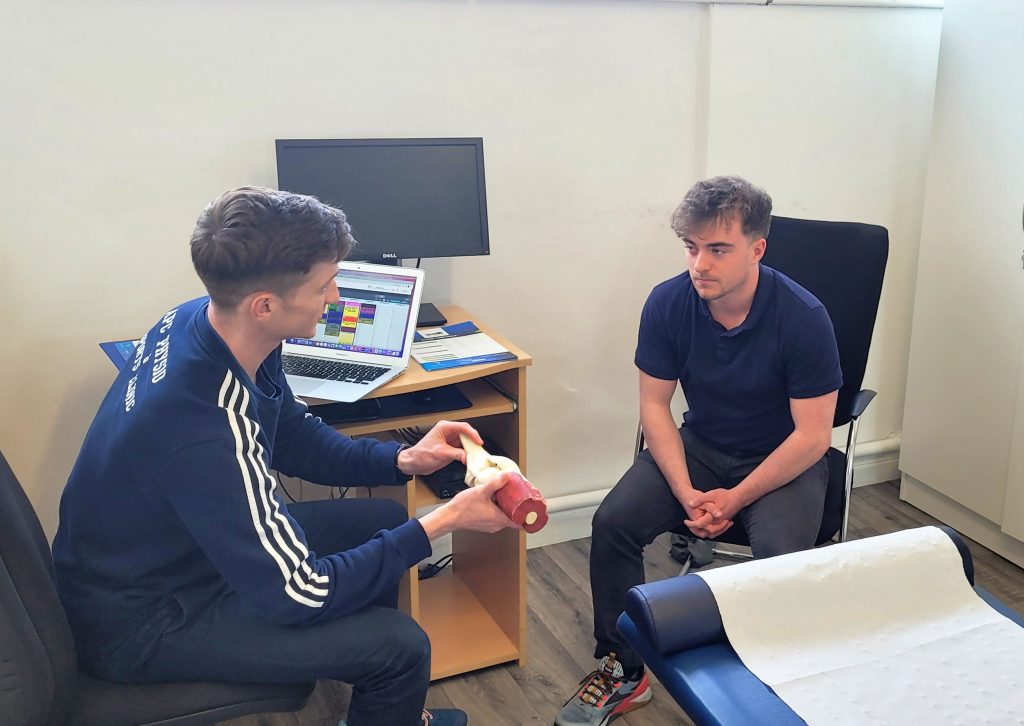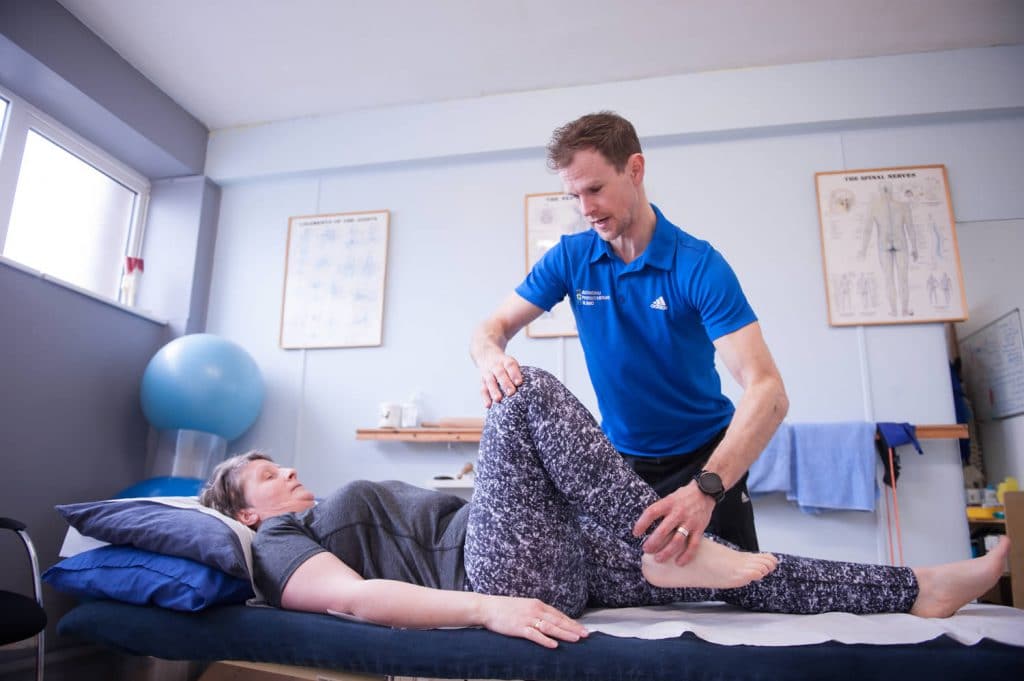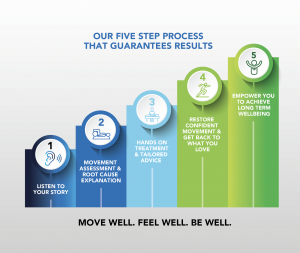Getting to the root cause of your pain
Another way of putting this is finding out where your ‘’chink in the chain’’ is, in relation to your body and overall health and daily life.
Once we find this after a thorough examination, we must work consistently at addressing and progressing the root cause of these weaker spots.
Sometimes, we like to employ what we call the ‘‘80/20 rule’’. Now what’s that you ask?
Lets say, you’re feeling pain in your knee. We assess and discover that there is some irritation on certain weight bearing movements like a lunge or a deep squat.
Everything else in the knee feels quite normal. When assessing your back and hip, we discover that there are certain back and hip movements that are restricted and weak. This is further compounded by the fact that these are working well on your opposite.
When we quantify this, we are able to show you that these areas are perhaps only working at about 60% of the capacity of the opposite side.
Therefore, we would work on these areas to bring them up to that 100% level.

If an area of the body is working at a deficit, it is going to cause other areas of the body to compensate and take up that slack.
Essentially, we need everything to do its job, as it meant to be doing it.
In this example, if we can get the back and hip working to their full potential, it will take the pressure of the knee and stop it from overworking.
Not just muscle weakness and imbalances
The above example looks at muscular imbalances and addresses one of the possible ‘‘leaky buckets’’ that we see in the clinic on a daily basis.
This is just one of the potential issues that could be contributing to your injury and pain.
Some other important aspects to consider are:
Previous injury history
One of the major aspects that can lead us to where the root cause, is looking at previous injuries.
We see it time and time again in the clinic: A previous injury that may have occurred 10 – 20 years ago but it is still impacting a person’s current pain levels and function.
Let’s call this, the ‘’grandparent’’ of your pain.

If the injury was significant and was never addressed in terms of strengthening and restoring correct movement patterns, the effects of this can linger.
Oftentimes, the person may have almost completely forgotten about this injury until prompted.
This can be the very reason why someone has been to other clinics and tried other approaches and have been unsuccessful.
So until you take care of the ‘‘grandparent’’, the effects of rehabilitation will be only short term.
Reduced mobility and altered movement patterns
These 2 factors can be linked to both current and previous injuries.
A reduction in ankle mobility, which may occur after an ankle sprain can cause the hip, knee or back to become overloaded due to compensating for the reduction. This is commonly seen in the clinic.
A significant groin injury for example may cause the area to tighten, as well as make it weaker.
If unaddressed, this could alter the way someone walks and runs over time.

This may lead to recurrent groin and hip problems.
You could treat and rehabilitate the groin and hip as much as you want but over time, the problem will likely return.
If they are involved in sport, it will probably happen again quite quickly. This can lead to a lot of unnecessary frustration and again shows that the right approach can make all the difference.
Listening at the person’s whole story or the holistic approach
To achieve a successful rehabilitation and get a person back to doing what’s important to them, a thorough approach is required that considers many aspects of a person’s overall health and day to day life.
A holistic approach is one that is often mentioned within the health care and wellness fields.
What does this actually mean?
It all starts with listening to the person’s own story. We find out about their injury, overall health and thoroughly take their history.
For a successful rehabilitation, we must look at these other contributing factors that could be at the root cause of your pain..

These include:
- Current training load if involved in sport
- Stress levels
- Appropriate sleep and position of sleep
- Do they stand, sit or drive a lot in their jobs
- Underlying health conditions and general health
- Weekly exercise levels
- Weight and body mass index (BMI)
A collaborative effort is key
Once the leaks or ‘‘chinks in the chain’’, have been identified and a step by step plan has been agreed upon, the client and therapist must work together to achieve this.
Weekly goals must be set and strategies have to be devised and employed.
The goals could include daily and general exercises E.G – do rehabilitation 6 days walk and walk 20 minutes 3 – 4 times a week.
Employ strategies around not sitting for too long (30 – 40 mins) at a desk and making sure you’re properly set up and also using standing and kneeling positions.
Setting a goal of 7 – 8 hours of sleep per night and having strategies like a 10 minute meditation and avoidance of electronics 30 minutes before sleep.
Therefore there are many aspects to getting to the root cause of why you may be in pain and not being able to do what is important to you.
Does the above sound familiar and you have been unsuccessful with other approaches? Call us today on 025 35015 or 021 7011252 to book an appointment or speak to a physio.
If you would like to find out more information, here is a link to another article and short video on the topic: